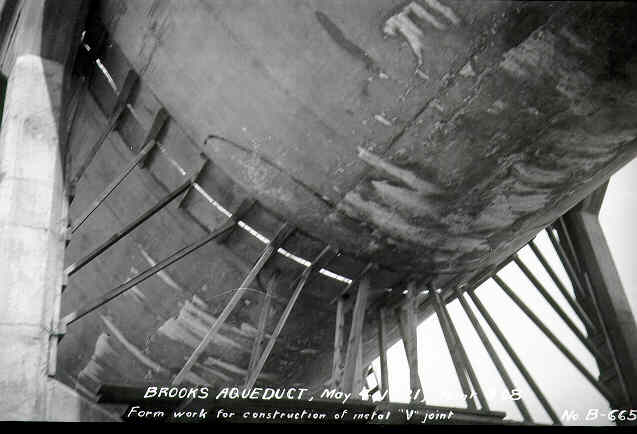After the disastrous collapse of the Winona flume, which was built out of steel and contained no expansion joints, did the need for joints become obvious. These joints are necessary to allow it to move. Movement in the 2 mile long aqueduct was not great, but expansion and contractions occur through the seasons.
The CPR decided to use a variety of expansion joints, but mainly copper ones, a decision that it never explained in any of its construction summaries. Muckleston stated, "Provision is made for variation in length of shell due to change of temperature by expansion joints at every fourth bent (or every 80 feet or 24 metres as bents were 20 feet or 6 metres apart) and at each portal and at each end of the siphon."
H.M.Gibb, Engineer of Structures for the Canadian Pacific Irrigation Department at Brooks, explained the process as "....Double expansion joints were made every 80 feet (24 metres) by putting a sheet of tar-paper on the top of the cap, and in girders and shell, making a clean cut clear across the structure with a tongue of sheet-copper 5 inches (13 centimetres) wide across the 1/8 inch (3 millimetre) gap..."
